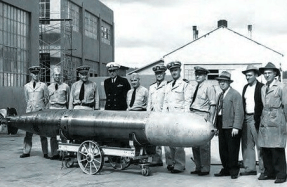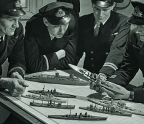LEVELING THE PLAYING FIELD

On July 6, 1944, Jack R. “Jackie” Robinson, a 25-year-old African American lieutenant with the 761st Tank Battalion, boarded a shuttle bus in front of the Black officers’ club at Camp Hood, Texas, and took a seat halfway down the aisle. Five stops later, the civilian driver ordered him to the back of the bus, as was the custom in states that enforced racial segregation. Robinson refused to move; he was on a U.S. Army base and saw no reason why he couldn’t sit where he wanted. When Robinson didn’t budge, the driver promised to make trouble once the bus reached its destination.
He was true to his word. Aided by irate civilians and later by officious army officers, the driver made plenty of trouble for the young lieutenant, as Robinson’s stand against discrimination spiraled into a cause célèbre that threatened his army career. It also jeopardized a future place in history that no Black athlete of his day would have dared dream of.

Robinson was familiar with racism. Born in 1919 and raised in a predominantly White neighborhood in Pasadena, California, he had endured insults and racial slurs from his neighbors. Standing 5 foot 11 and weighing 180 pounds, he blossomed into a standout athlete at the University of California, Los Angeles (UCLA), lettering in football, baseball, basketball, and track. On the gridiron, he won nationwide fame as a running back and punt returner, earning favorable comparisons to Jim Thorpe, the Olympic gold medalist, professional football player, and major league baseball player widely acknowledged at the time as America’s finest all-around athlete. After Robinson left UCLA in 1941, the next stop should have been the National Football League, but the league barred African Americans, so Robinson played minor league football with the integrated Honolulu Bears and Los Angeles Bulldogs until he was drafted into the army on April 3, 1942.

The military that Robinson entered was expanding rapidly to fight an all-out war, jumping from 334,473 men and women in 1939 to 3.9 million in 1942 and
You’re reading a preview, subscribe to read more.
Start your free 30 days





